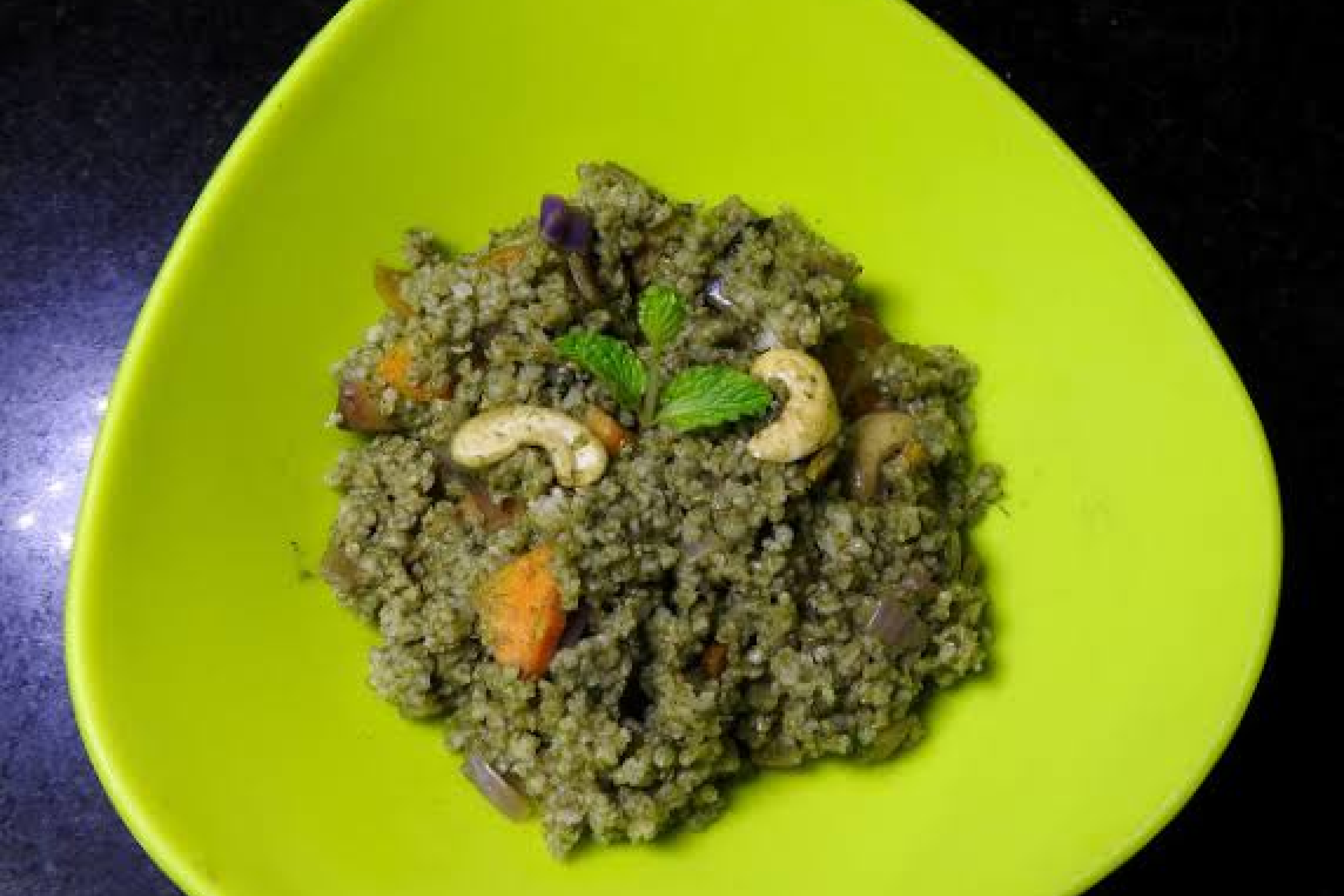















































Ingredients:
Dehulled Barnyard millet-1 cup, Water-2 cups, Onion-1 in no., Carrot-1 in no., Tomato-2 in no., Curry leaves-1 Spring, Bay leaf-2 in no., Salt to taste and Oil -2 tsp. Mint Chutney: Mint Leaves-1 cup, Coriander leaves-¼ cup, Green chilli-1 in no., Cloves-1 in no., Garlic pods-5 in no., and Ginger-1/2 inch.
Preparation Method:
